Hidden Story: How an 80-Year-Old Farmer Sustains Colombia’s Panela Tradition
Step inside a rural trapiche and witness how sugarcane connects food origins, community, and survival in the Colombian countryside.
3 am is a strange hour. To some, it signals the end of the day as they crawl into bed. To others, it’s the start of a very early morning. For us, the 3 am alarm meant the latter.
It was pitch dark, and there were no lights as I got dressed in the shadows. I made my way to the toilet, which we had to flush with a bucket. There was no shower or hot water, so I held the bucket full of cold water above my head and let it splash down on me. The water drained through a small hole in the wall behind the toilet.
How We Found Ourselves Here
This is how Deisy’s parents have lived for the past 50 years in their humble brick house. They are “campesinos” or people of the countryside who work the land and live off it for sustenance. They are proud of their home and say they have everything they need.
Last March when my dad and I were visiting Bogota, we noticed my grandparent’s nurse, Deisy, kept bringing my grandma blocks of fresh panela (unrefined sugar). When we asked her where she got it from, she told us her parents live in a region of Colombia called Caldas where they process sugarcane into panela. She invited us to stay with her parents the next time we found ourselves in Colombia. We jumped at the chance and planned our trip for this past October.
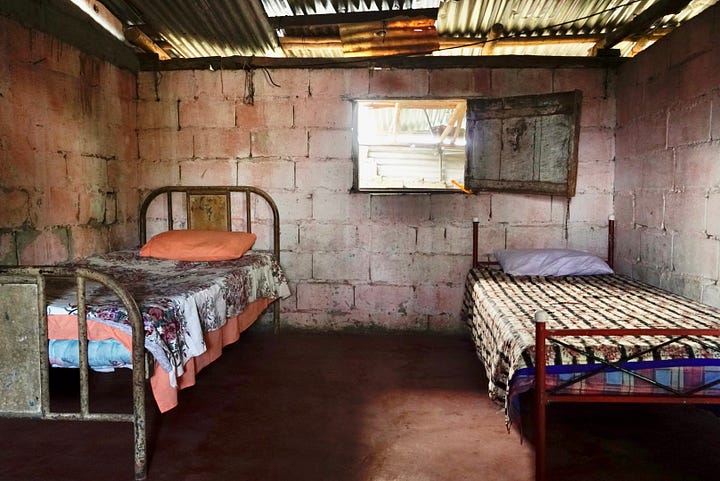
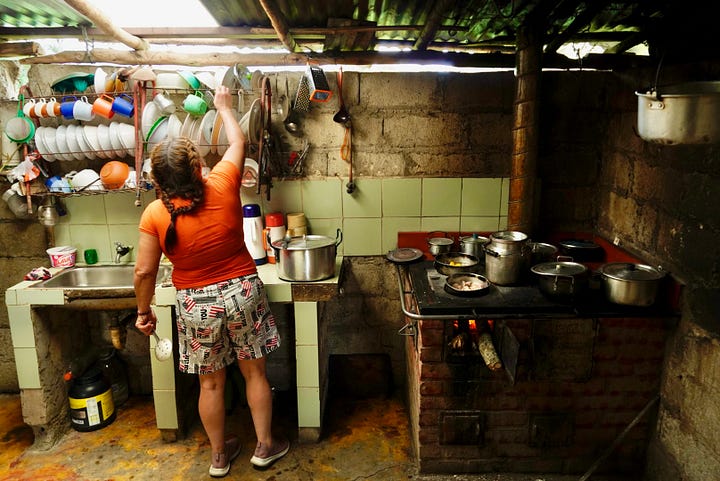
Tradition and Knowledge
Deisy’s father, Juan, was an “arriero” or muleteer in his youth— someone who transported goods— coffee, bananas, sugar, construction materials, etc. using mules through rough mountainous terrain before modern transportation infrastructure. But 40 years ago when arrieros started phasing out, he started growing sugarcane and learned the art of making panela.
Today, he is 80 years old and is the only one in the vereda (rural neighborhood) who knows how to fully process the panela. Every two weeks he chops up, rounds up, and processes all the neighbor’s sugarcane. He rents a mill at a neighboring farm and with the help of two other laborers, they process the cane plant into panela and use mules to bring it into town to sell.
Their house is humble. Raw brick walls hold up a tin roof. There is a small kitchen with a wooden stove and two rooms, each with three twin-sized beds. The wind blows strong here and Deisy’s mom, Orlanda, told us a few months ago their whole tin roof was blown off in the middle of the night.
In the living room, there is an extra bed where one of the laborers, Jaime, sleeps. He lives in a town farther away so when they go into sugarcane production, he comes and sleeps over.
When we arrived at their house we were immediately served a tasty dinner of beans, plantains, avocado, eggs, arepas, agua de panela, and fresh papaya. Everything was grown and produced on their land. We ate together and when the sun went down we sat chatting in the darkness for hours hearing stories of their life.
The next day I heard Orlanda rummaging around in the kitchen at 3 am. She fired up the wooden stove and the whole house filled with smoke. Soon there was boiling water and black coffee sweetened with panela. We all gathered at the front porch drinking our coffee and getting ready to head to the “trapiche” (mill) a few miles away.
The trapiche is like a garage with wooden beams and a tin roof. Here we witnessed the transformation of the sugarcane plant into hard blocks of panela using pressure, heat, and time.
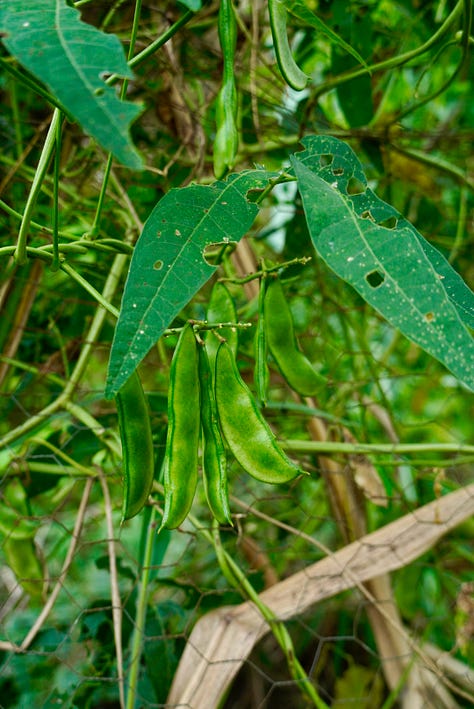
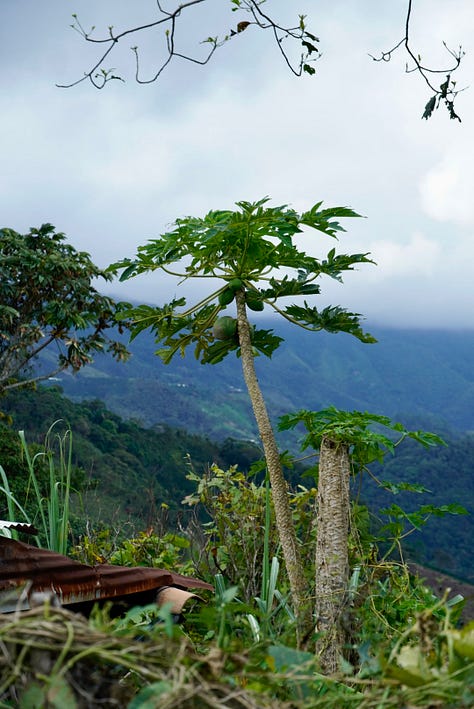
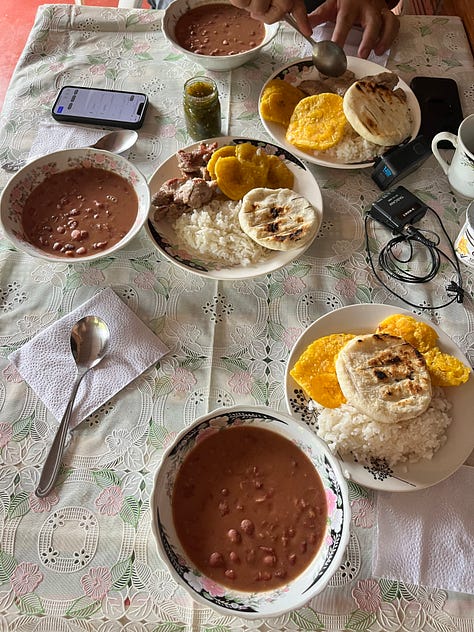
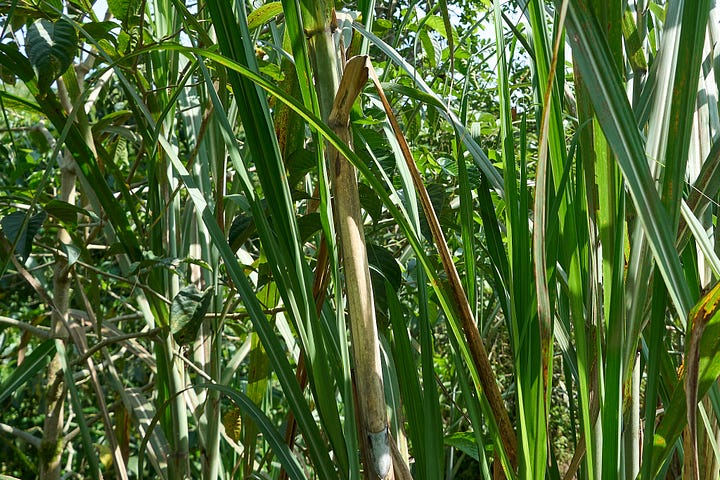
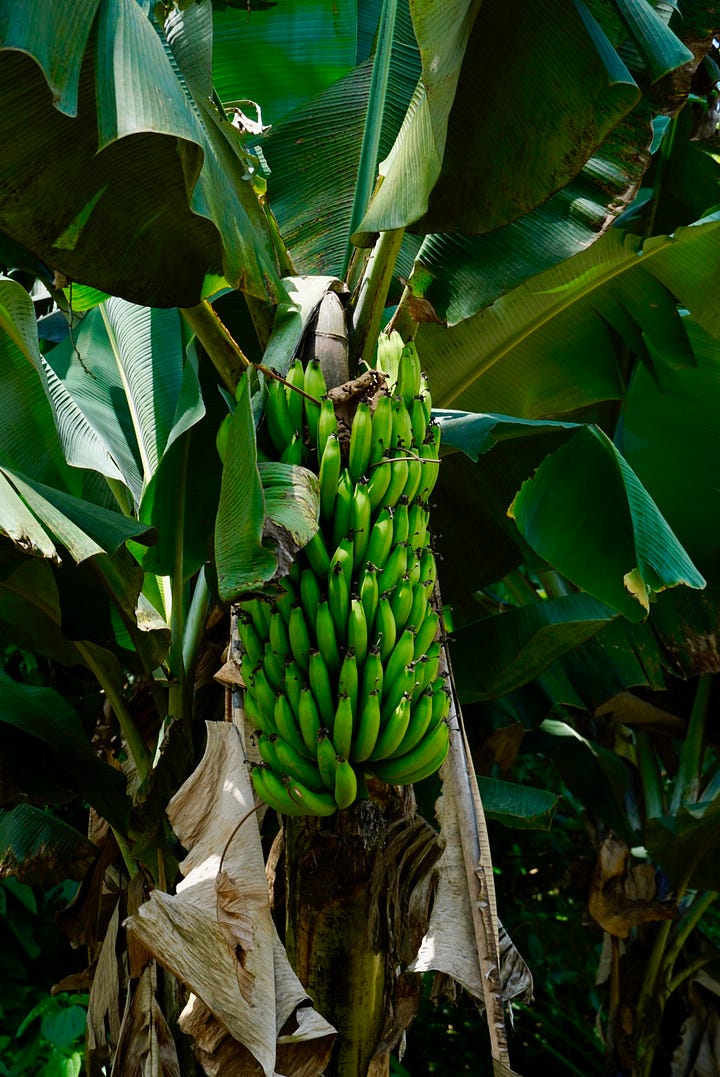
Connection to Food Origins
Once I was at a grocery store and overheard a little kid asking her dad where meat comes from. She thought they just made it at the grocery store. I saw her dad struggle to answer her question.
Ever since then, I’ve felt more curious about food and where it comes from. It’s not just kids nowadays that don’t know the origins of our food, but adults too. I bet most of us haven't ever seen a bean plant before. We don't give a second thought to beans that come in cans or plastic bags at the grocery store. Or have you ever seen banana plants grow on steep mountainsides and wondered how it’s even possible to harvest bananas on such a steep incline?
One big ingredient that is ever-present in our food is sugar. But in countries like Colombia, Mexico, and Indonesia, you’ll see a more natural form of sugar called panela, piloncillo, or jaggery. It’s unrefined sugar that retains its natural minerals and has a low glycemic index compared to regular sugar. If you ever visit Colombia you will see panela often offered with your coffee instead of white sugar.
A Day at the Trapiche
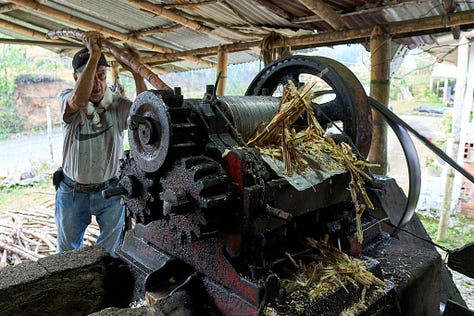
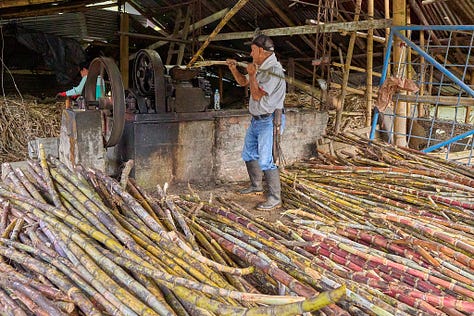
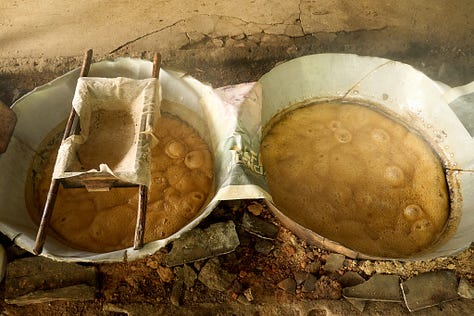
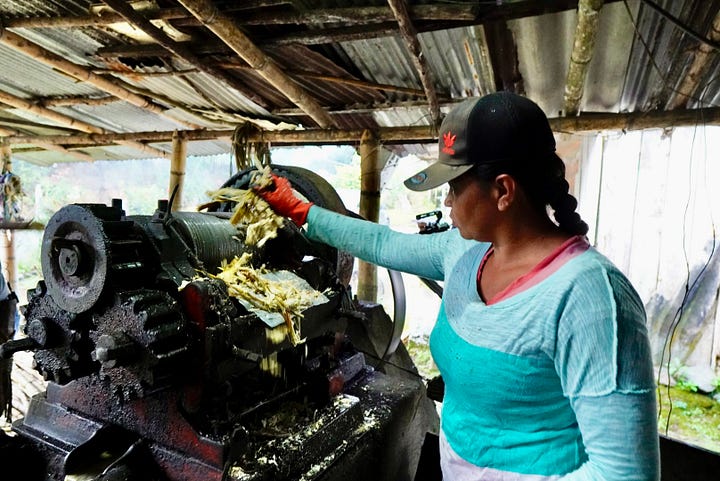
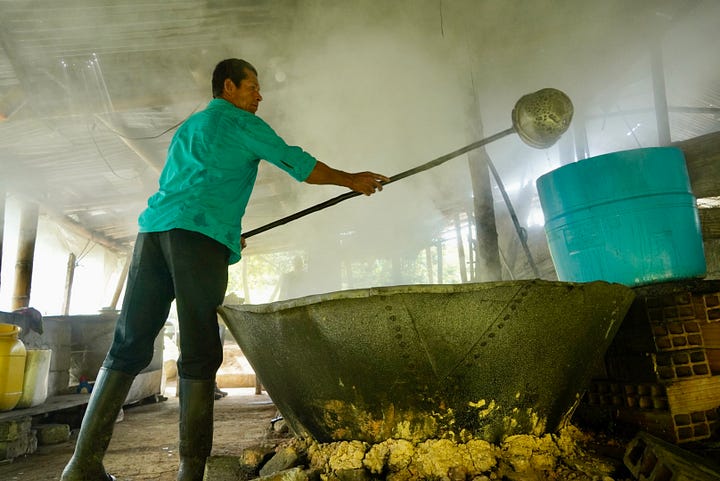
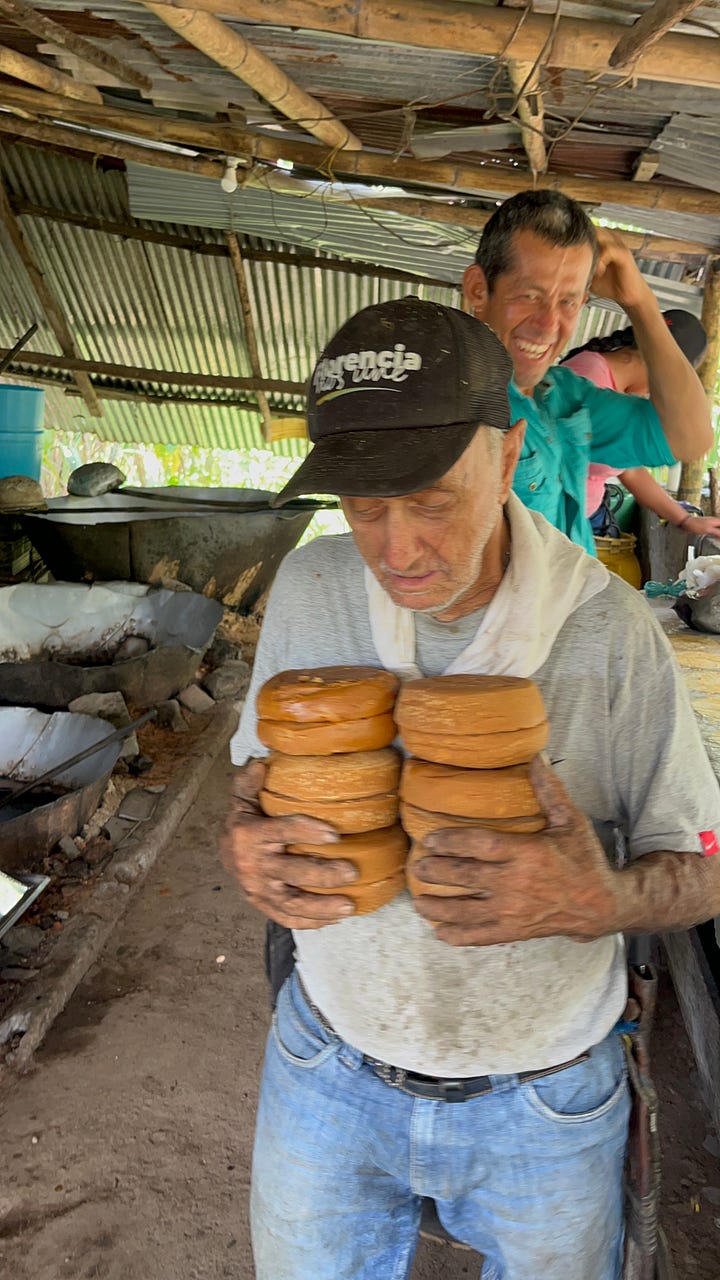
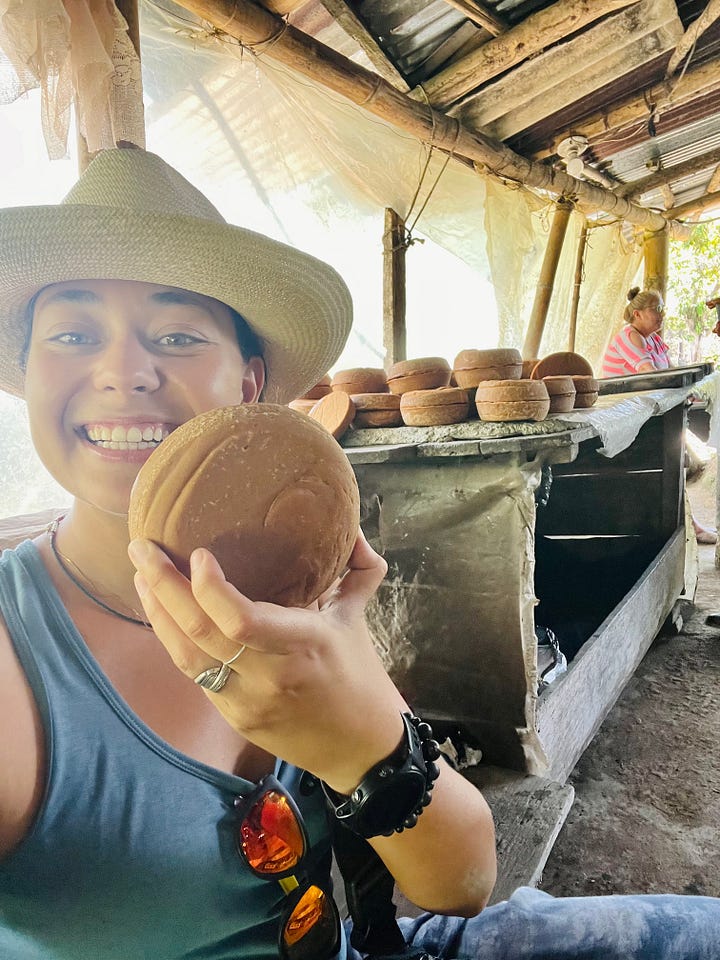
We arrived at the trapiche at 4 AM. Juan, Jaime, and another worker named Ana joined us. Ana is a super strong woman who works hard in the production. She told us her husband passed away in a landslide the previous year, in front of Juan and Orlanda’s house. Out here in the countryside, there are many accidents and her husband’s death wasn’t the only death we heard.
In short, the sugarcane gets cut in the fields and transported to the trapiche with horses and mules. From there it gets put into the mechanical mill which presses the juice out of the cane and spits out the husk. The juice goes through a gutter and reaches a huge boiling pot. There it boils until it gets moved to smaller boiling pots. To heat the cane juice they use an underground fire pit. What fuels it is the husks from the sugarcane, so nothing is wasted in the process.
At this point the cane juice boils for a few hours until it becomes thicker and thicker from being constantly stirred. Thick vapor fills the trapiche at this point and starts smelling sweet. At one point we heard shouting “conejo, conejo!!” That meant the juice had reached a thicker consistency and they were ready to take it out.
Next, Jaime moved the thickened juice out of the flames and onto a tank. Ana and Jaime took turns stirring it until it became the consistency of peanut butter. This requires insane arm strength because they stirred it for about an hour until it finally reached the texture they wanted.
The panela was then poured into molds and let sit on the counter for 30 minutes until it hardened into circular disks.
The whole process lasted for about 10 hours. By 2 pm, they finished and all the cane had been turned into round panela discs wrapped in plastic and ready to be sold. The next day they would load it on mules and take it to town.
The labor is intense. Seeing 80-year-old Juan work such a demanding lifestyle is admirable. On one hand, the work is physically taxing and hard on the body. On the other hand, it’s also what keeps him active and strong. Even at his age, this work sustains his family. Yes, it’s laborious but it still gives him purpose and a sense of community working with his team and joking around at the trapiche.
Dangers and Resilience
The trapiche is a dangerous place. Every inch of it can cause accidents. If not careful, a hand or arm could slip into the mill and get crushed. There could be a fire accident tending to the underground fire pit. Someone can be burned or fall into the huge boiling pots of cane juice (there have been accidents where young kids accidentally fall into them and don’t survive).
It’s a delicate process and very few are willing to take it on nowadays. In their vereda, Juan is still the only one who has the generational knowledge to run the trapiche.
In a future story, I’ll share about another trapiche we went to and met a 15-year-old kid who is learning the art from his grandfather. He gave us hope that future generations will continue the tradition.
Video above shows how their house fell into a landslide after a storm and took down the back half of the house.
Harsh Realities of Rural Life and the Power of Community
Sometimes it’s easy to romanticize life in the countryside. Surrounded by nature, eating food straight from your land, waking up to the sound of birds, no distractions from technology. But the reality is also that you are at Mother Nature’s mercy.
A drought is dangerous because it means there is zero water since the spring dried up. A windstorm blows off the roof. A lightning bolt strikes a person washing the dishes in their home (true story). An electrical current from a storm travels to a person’s cell phone and kills them (true story). Heavy rainfall causes a landslide and buries a person (as what happened to Ana’s husband).
The night after we left, there was a heavy rainstorm. We got a message from Deisy the next day saying she couldn't take the bus back to Bogota to my grandparents because there were landslides and the single road was blocked. Even worse, she said she woke up to a huge crack in the kitchen floor, and the entire back wall of the house was tilted. She walked out the back door and saw the precipice. The house was falling into a landslide. That night the entire backyard disappeared. The mango tree, the sugarcane, and half the house fell into the landslide. After one storm, their house and property were gone.
Thankfully Deisy, Juan, and Orlanda were okay and able to evacuate. They gathered all their stuff and moved into a neighbor’s house. The following week, another neighbor told them they could half a patch of his land to build a little house. The following week, the community came together and helped build a new home for them. They got up the walls, put up a roof and thanks to the strength of their community they now have a new safe place to live.
It’s proof that the relationships with the people around us are the most important. Having people we can rely on and care about is what gets us through the tough times and gives us hope.
(PS: This story will soon be part of a documentary about hidden stories of Colombian campesinos. If you liked this story you might like this story of visiting a remote coffee farm in Colombia).


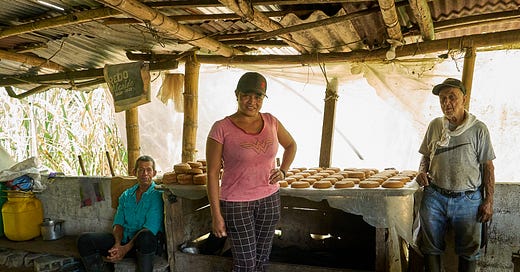



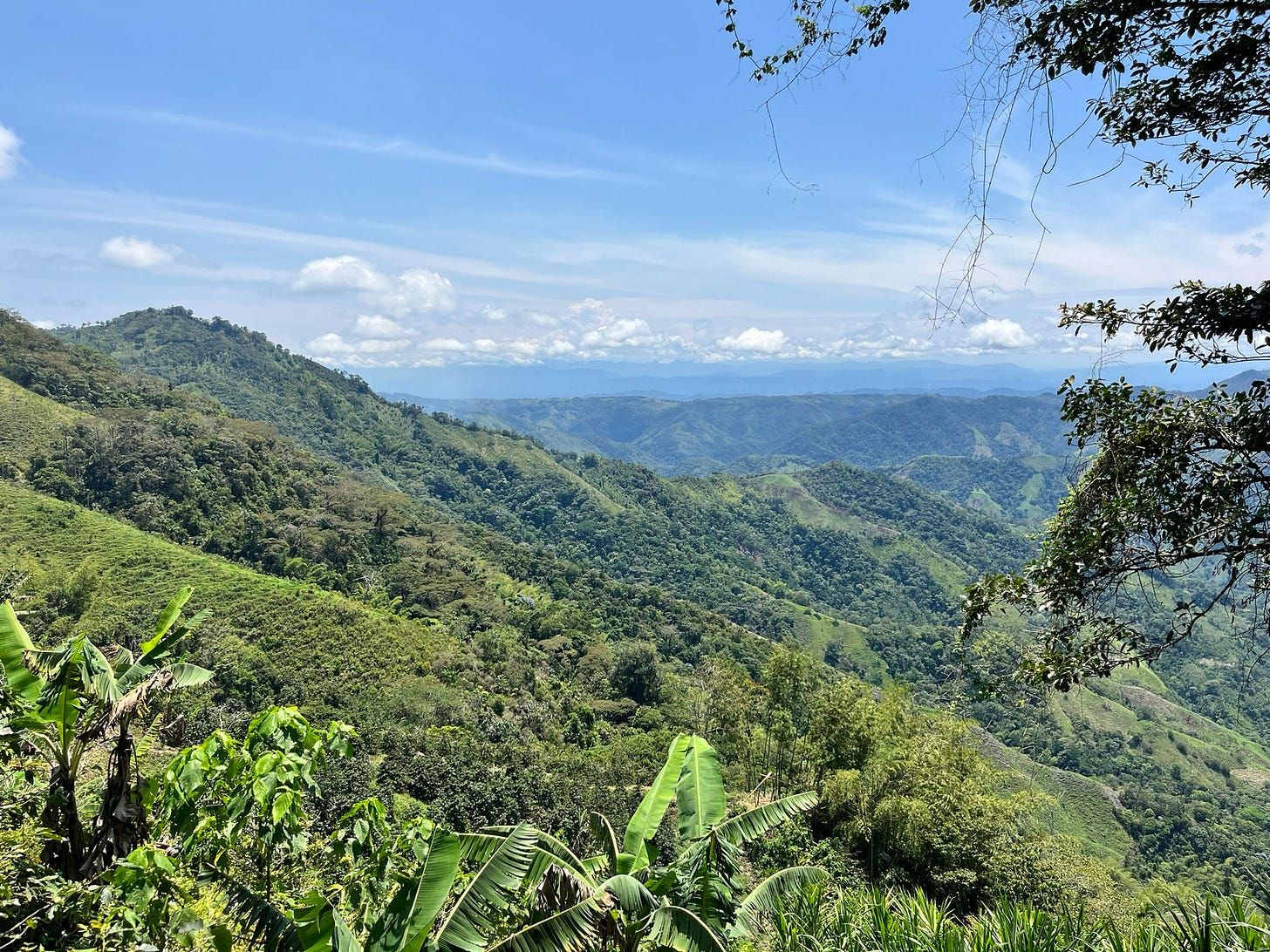
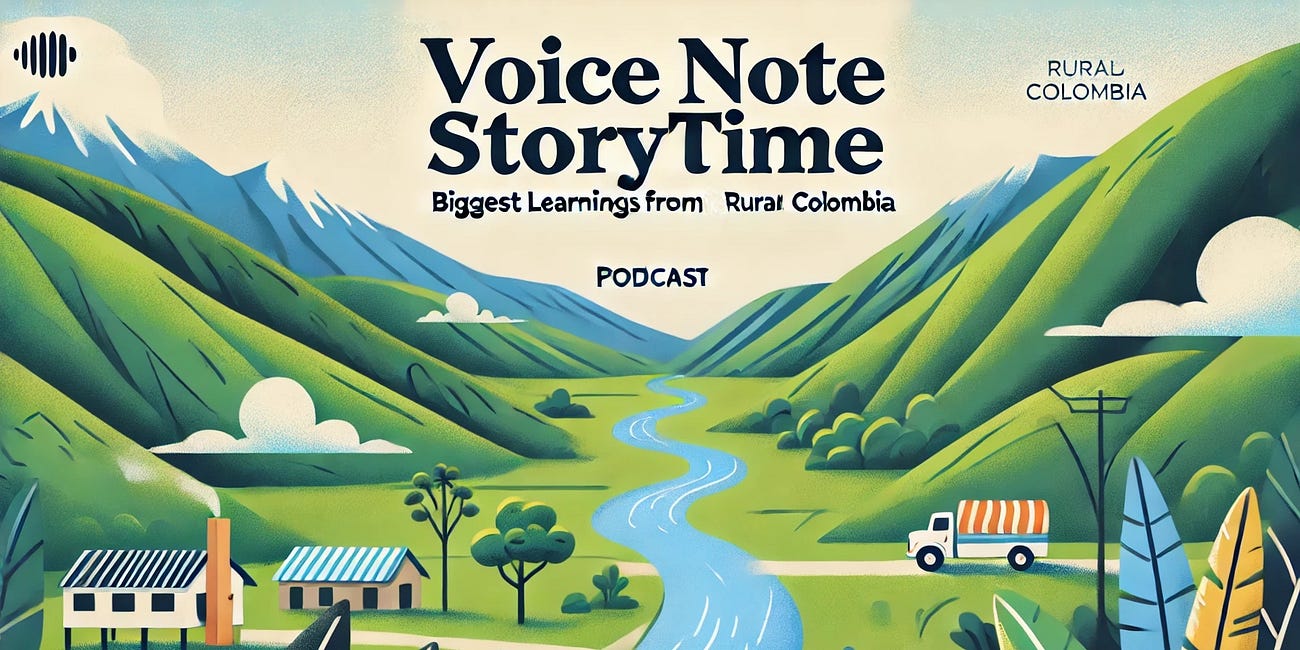
Very interesting true story. I am reminded of my good fortunate not to have the struggles and risks that accompany this way of life. The support of the community is a blessing for these people and is something to be admired. I enjoyed the exposure to a way of life that is unfamiliar to me. Thank you Maria .